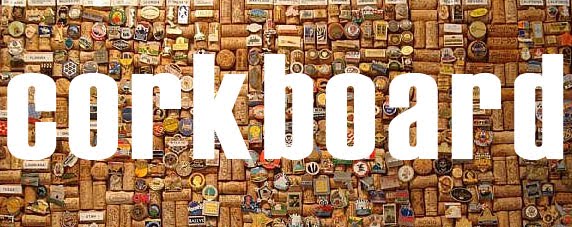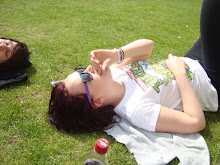Today me, Claire, Amber and Rob took a trip to Duffield Printers on Kirkstall Rd (organised courtesy of Paul, thank you, you diamond). We got there for 9am, but the guy that Paul had been emailing was unavailable for whatever reason, so we got to hang around with Clive Elston, the sales rep. He was awesome; so, so helpful. He gave us his card and everything. :)
He started off by showing us a selection of their current jobs. I was surprised to see they printed the LCA Graphics graduate books, I assumed it would go to Team Impressions along with the majority of the print jobs from our college... It was interesting to hear that the print industry now receives more work from freelance designers (like ourselves) as opposed to design agencies, because clients are becoming less and less willing to pay the additional charges accumulated by going through an agency - good news.
In relation to the corporate side of the business, we were told that Duffield has built up a respectable reputation within the industry. It offers competitive prices but at the same time, won't compromise their level of service. If someone requests a quote for a job that they know they're not suitable for they will turn it down as it can be done better and more reasonably priced elsewhere, which I think is a pretty good ethic considering the money grabbing attitude of the economy at present.
THINGS WE NEED TO CONSIDER WHEN DESIGNING FOR PRINT
We were then introduced to one of the graphic designers who prepares clients files for print. She took us through a few of the core requirements of print files.
- Files can be prepared in either InDesign or QuarkExpress, as long as they are saved as PDF files then it's entirely down to personal preference.
- All print work needs a 3mm bleed (we learnt this last year in our reportage book project)
- Along with the document intended for print, send any fonts and images that are used in the design.
- Industry prints in CMYK colouring, try to avoid RGB images.
- Be aware of 'trapping' - eg. a black box on top of a part yellow, part red background, the black will be slightly different shades. Where you can, block out the base colours.
- Save pages in the right order - whereas in our book projects we had to arrange the pages correctly for print, industry has software (called Cockpit) that does this automatically - save them in the order they will read.
Once the files have been prepped by the print team they will send you back a final PDF document for your approval before using lasers to prepare the print plates.
We were then given a tour of the building and shown all the technical equipment used in industry. It was really quite fascinating. They have 3 printers: an HP Indigo Digital Press (fucking HUGE); a 5 press lithograph printer; and a 10 press lithograph printer. The 10 press printer is a lot more efficient as it is able to perfect the images. 'Perfect', as we learned, is where you are able to print both sides of a document on one run through a printer; the machine flips the sheets when the pass the fifth press, pretty clever.
We also saw the colossal folding machine and the 'muller' which combines all the sections and 'stitches' ( we would definitely call it staples) them together.
Overall I'm SO glad we went. Even thought we're explorong traditional print methods in this project it's important to know the specifications that will be relevant to our commercial print practices in the future - not everything can be solved with a silkscreen!


No comments:
Post a Comment